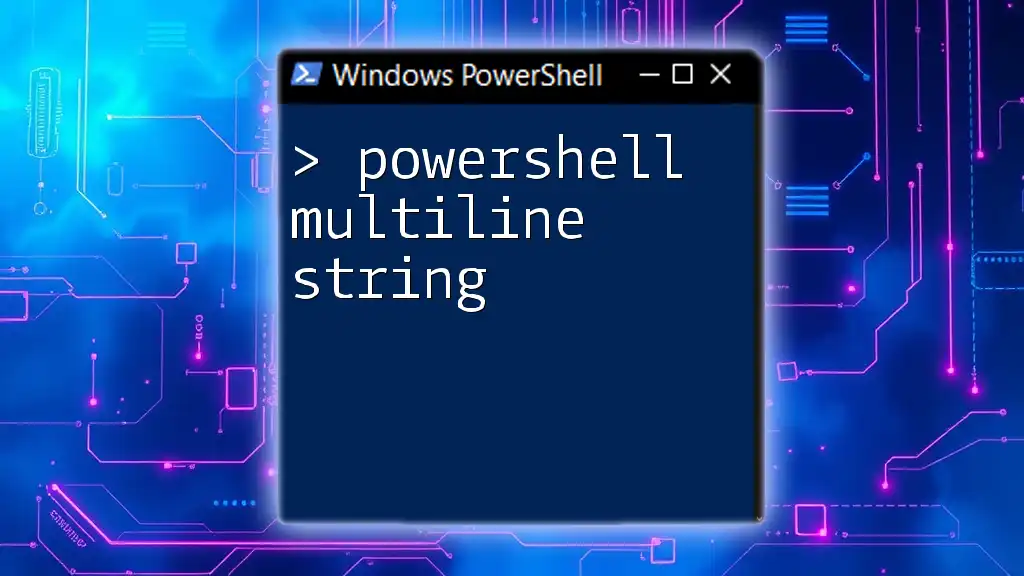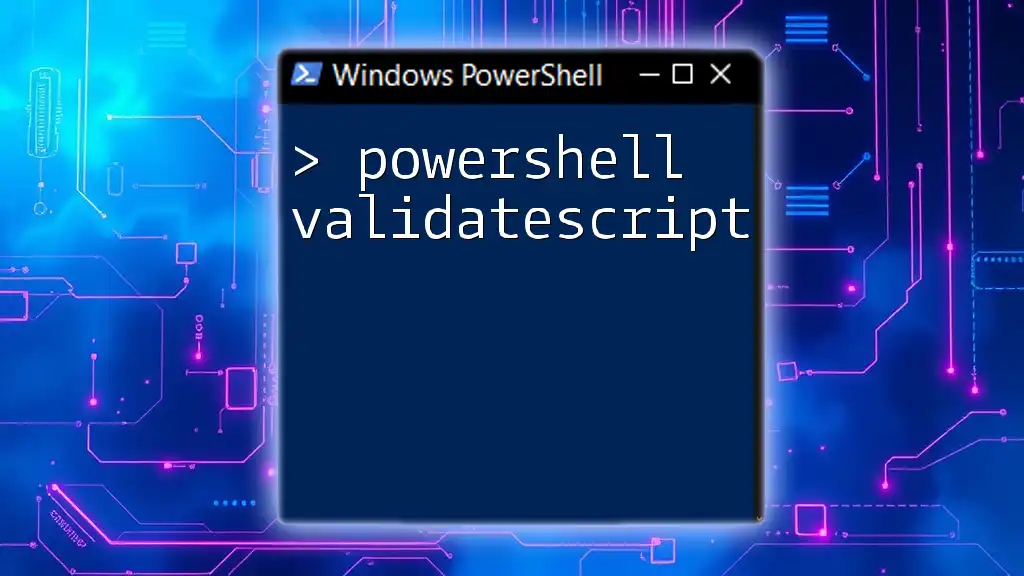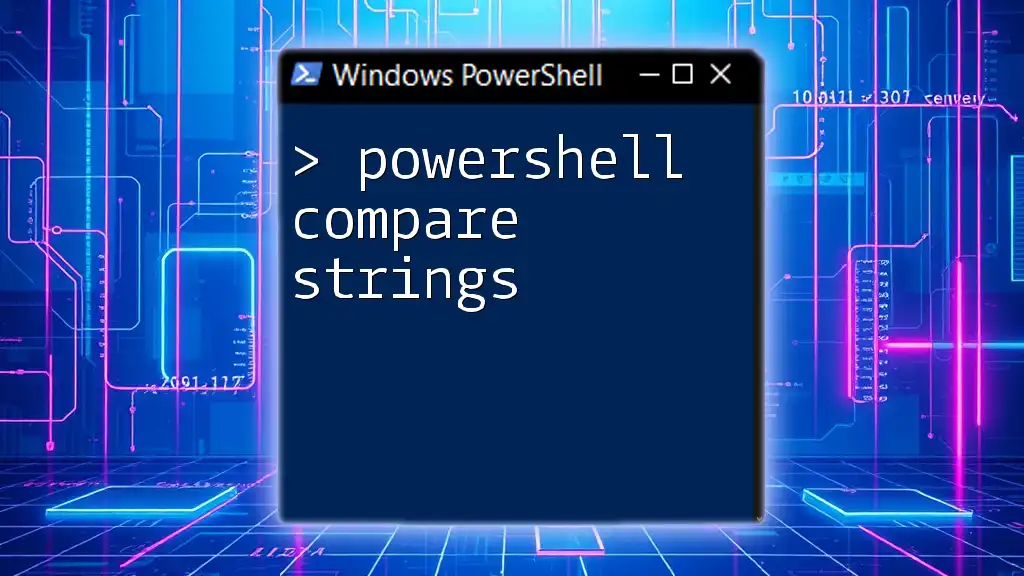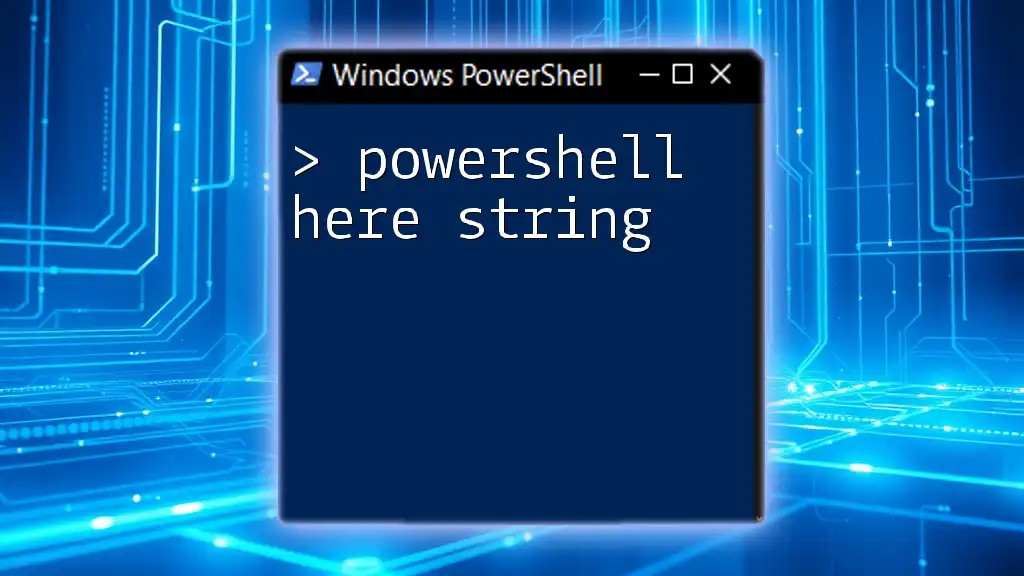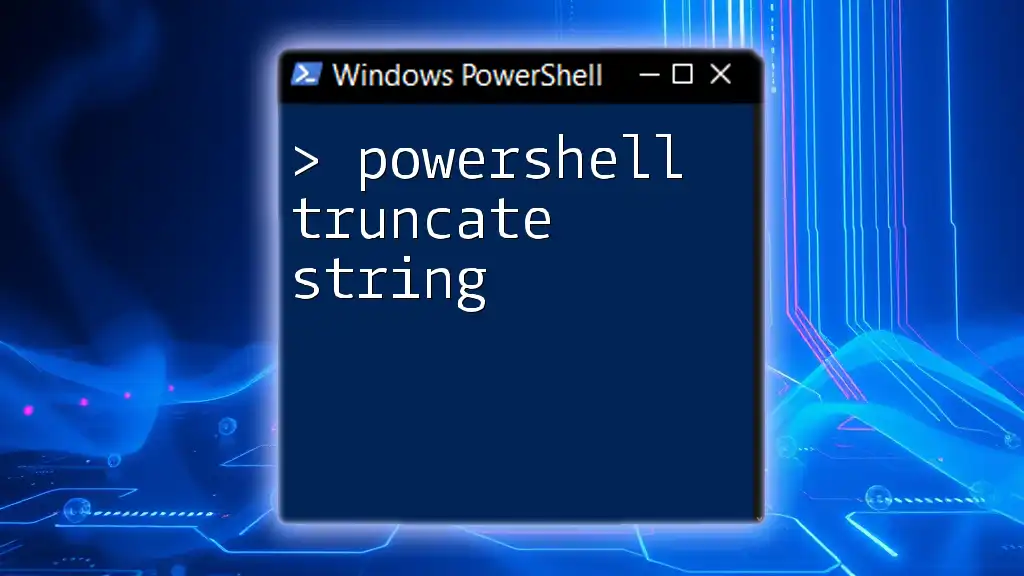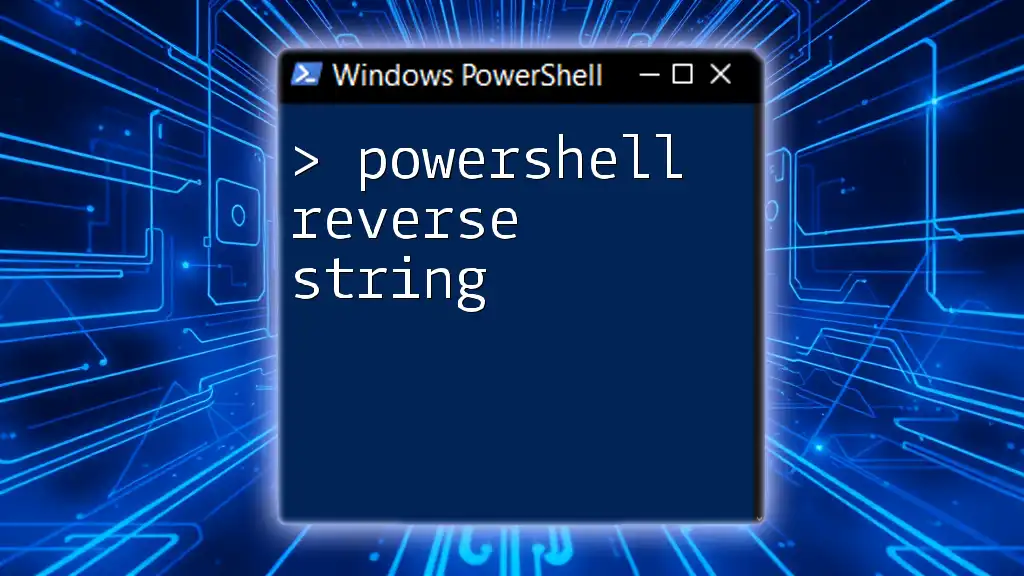In PowerShell, a multiline string can be created using a here-string, which allows for easy formatting across multiple lines without the need for concatenation.
$multilineString = @"
This is a multiline string
in PowerShell.
It can span multiple lines!
"@
Write-Host $multilineString
What is a Multiline String?
A multiline string is a sequence of characters that can span multiple lines, making it ideal for storing text data formatted across several lines. Unlike single-line strings, which are limited to a single line without special formatting, multiline strings allow you to create more complex strings while keeping the code readable and manageable.
Using multiline strings can significantly enhance your scripts' clarity, especially when dealing with longer texts or complex queries. You should consider using multiline strings when you need to incorporate lengthy or structured data in your PowerShell scripts, such as SQL queries, JSON objects, or documentation.

Creating Multiline Strings in PowerShell
Using Here-Strings
Here-strings are one of the most straightforward ways to create multiline strings in PowerShell. A here-string starts with `@"` and ends with `"@`, allowing anything in between to be considered part of the string, including line breaks.
The syntax is simple:
$multilineString = @"
This is a
multiline
string using
here-strings.
"@
In this example, everything between the start and end delimiters is treated as part of the string, including the line breaks. This can be particularly useful when your strings contain complex formatting, allowing you to maintain the visual structure.
Output Example:
$multilineString
Using Escape Characters
Another way to create multiline strings is by using escape characters. In PowerShell, you can use the backtick character (`) to denote line breaks without breaking the string syntax.
For example:
$multilineString = "This is a`nmultiline`nstring using escape characters."
In this example, the `n` indicates a new line within the string, enabling you to simulate multiple lines while keeping everything within a single line statement.
Output Example:
$multilineString

Advantages of Using Multiline Strings
The advantages of using multiline strings are numerous:
- Enhanced Readability: Multiline strings allow you to present long text in a clearer format, making it easier for you and others to read and understand your code.
- Maintainability: When your strings are well-formatted, it simplifies updates and changes to your code, which is critical in collaborative environments.
- Structured Formatting: With multiline strings, you can maintain the inherent structure of the text, such as in code templates or long SQL queries, thus avoiding confusion and errors.
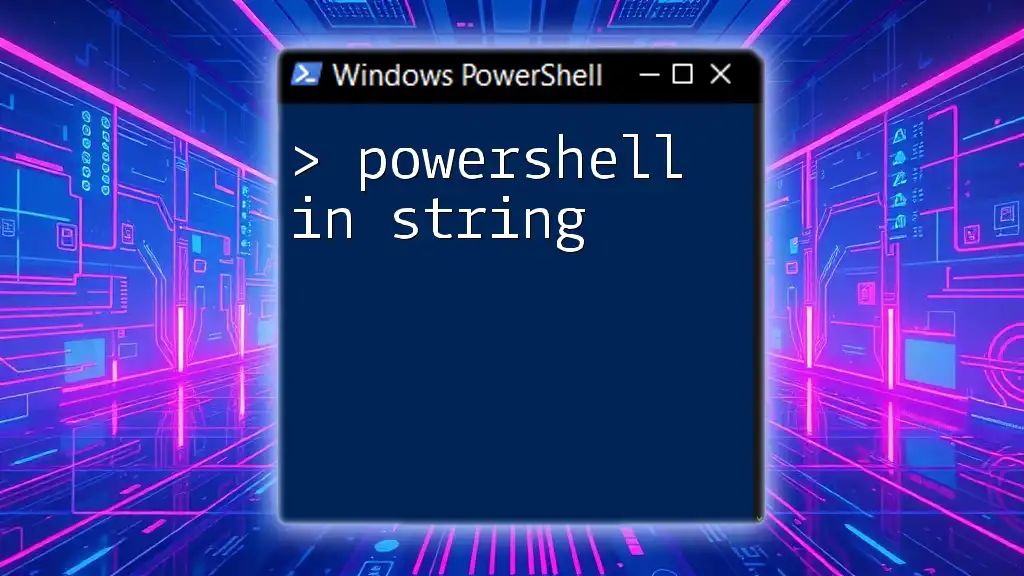
Common Use Cases for Multiline Strings
1. SQL Queries
When interacting with databases, SQL queries can quickly become lengthy and complex. Here-strings allow you to include them directly in your PowerShell scripts without cumbersome string concatenation.
Example:
$query = @"
SELECT *
FROM Users
WHERE Active = 1
ORDER BY Username
"@
Using a here-string for SQL queries makes your code more readable and easier to modify.
2. JSON Data
With the growing importance of JSON in data interchange, handling JSON directly in PowerShell scripts can be a common scenario. Here-strings are again beneficial for defining JSON characters effectively.
Example:
$json = @"
{
"name": "John Doe",
"age": 30,
"city": "New York"
}
"@
This method helps maintain the structure of the JSON data, making it easier to understand and modify.
3. Documentation Strings
Using multiline strings for documentation within your scripts can significantly aid in code clarity, especially when sharing or collaborating with others.
Example:
$documentation = @"
This script performs backup operations.
It targets specific directories and files.
Ensure to replace 'source' and 'destination' before running.
"@
In this manner, scripts become self-documenting, reducing the need for external documentation.
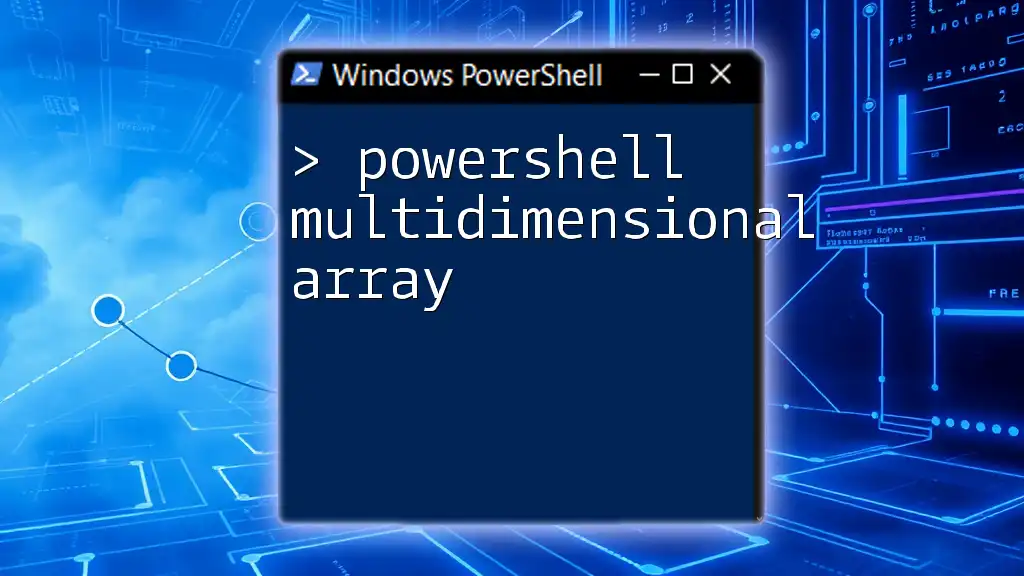
Best Practices for Using Multiline Strings
To ensure effective use of multiline strings, consider these best practices:
- Organize Code: Keep your code organized by leveraging multiline strings where necessary while avoiding excessive complexity.
- Avoid Overuse: While multiline strings can enhance readability, overusing them inappropriately can lead to confusing code, making it harder to troubleshoot.
- Comment Your Code: Utilize comments in conjunction with multiline strings to provide additional context and explanations for the content, further increasing readability and maintainability.
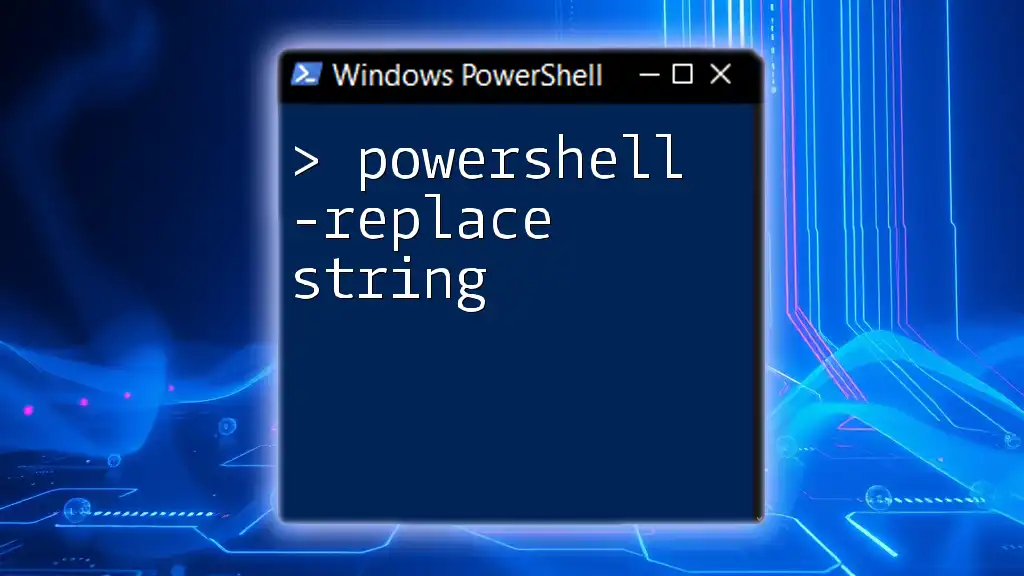
Conclusion
Multiline strings in PowerShell are an essential tool for creating more efficient, readable, and maintainable scripts. They allow for the inclusion of complex data formats while preserving clarity. By effectively employing here-strings and escape characters, you can enhance your PowerShell scripting skills and improve the quality of your code. Practice using multiline strings in your own projects, and soon you'll find them to be an invaluable part of your PowerShell toolkit.

Call to Action
Don't forget to subscribe for more PowerShell tutorials and explore our related posts or resources for further learning!

